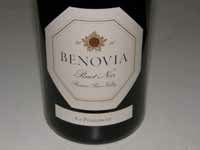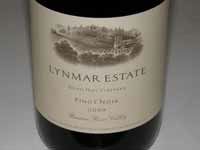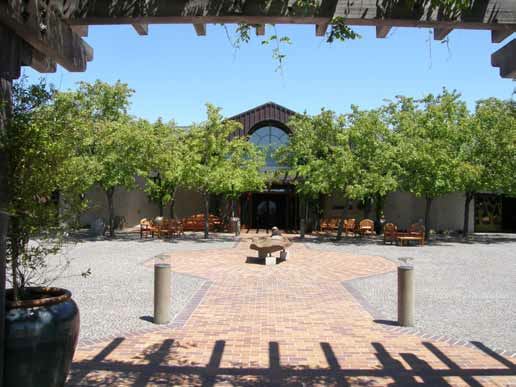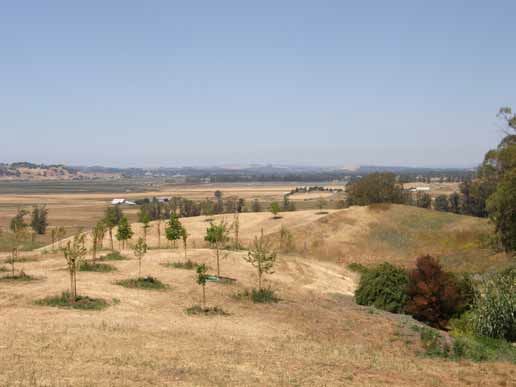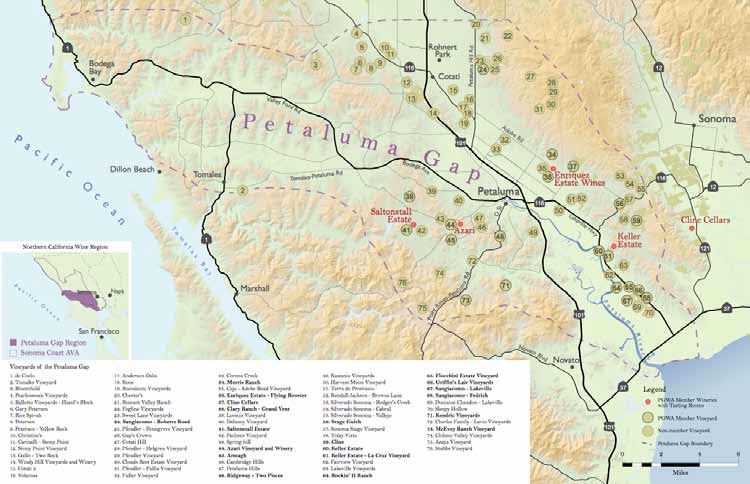Recent Stops on the Pinot Trail
I left Anderson Valley on a Pinot high and headed for the Russian River Valley for a little Pinot rehab. There
were five stops on my agenda: Benovia Winery, Lynmar Estate, Keller Estate, Freeman Vineyard & Winery,
and Kosta-Browne. I will defer Kosta-Browne to an article to follow as there is much to discuss about their
gleaming new winery. I tasted through their entire lineup of 2011 releases upon my return home.
Benovia Winery
Winemaker Michael Sullivan, a veteran who made outstanding Pinot Noirs at Hartford
Family Winery several years ago, joined with Joe Anderson and his wife Mary Dewante to establish Benovia
Winery in 2003. A 55-acre ranch in Santa Rosa containing Hartman Road Vineyards and Winery was acquired
from Cecil DeLoach, and contiguous land was bought. Sullivan led the upgrade of the winery, the rehabilitation
of existing vineyards, and the development of new vineyards on the property. The winery’s ultimate goal is to
produce almost all their wines from vineyards they own and farm. By the fall of 2013, for example, the Russian
River Valley appellation wine will be 90% estate. The wines have improved noticeably each year as Sullivan
has refined his style to accommodate the vineyard sources, reaching a peak with the extraordinary wines of the
2010 vintage.
I sat down on April 20 with Sullivan to taste the four Pinot Noirs and two Chardonnays from the 2011 vintage.
Yields were down significantly in this vintage as mildew pressure during the growing season presented a
challenge. The cold weather delayed bud break, slowed ripening and pushed harvest back a month. Yields
were small but of high quality. Benovia no longer sources wine from Savoy Vineyard in Anderson Valley, and no
fruit was forthcoming from Sonoma Coast sources so only four 2011 Pinot Noirs are offered. The wines are
lighter and less concentrated in the 2011 vintage, but have bright acidity, refreshing charm and are readily
approachable.
The 2013 spring release includes a 2012 Rosé of Pinot Noir ($20), a 2011 Russian River Valley Pinot Noir, and
a 2011 Russian River Valley Chardonnay. A limited number of 2010 wines are still available. Tasting is by
appointment in a pleasant sit down room in the winery’s hospitality center. Visit www.benoviawinery.com.
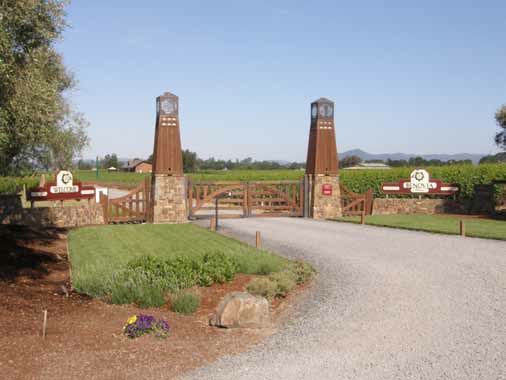
2011 Benovia Russian River Valley Pinot Noir
14.1% alc., pH 3.61, TA 0.63, 1,600 cases, $38. Released
March 2013. 60% estate Martaella Vineyard with the remainder from Martinelli, Lingenfelder, Dutton and
Petersen vineyards. A blend of Calera, Swan and Mt. Eden selections, Pommard, and Dijon “828” and 943.
10% whole cluster. Indigenous yeast fermentation. Aged 16 months in 40% new French oak barrels.
·
Moderately light reddish-purple color in the glass. Nicely perfumed with fresh cherries and roseate notes.
Flavors of Bing cherries, cola and exotic spice. Drinks bigger than the color would indicate. A solid, go-to,
daily drinker. Good.
2011 Benovia Cohn Vineyard Sonoma County Pinot Noir
14.2% alc., 50 cases. Unreleased. This vineyard
was rehabilitated and is now in its sixth year of being farmed organically. The vines are in much better health,
but yields are still minuscule at ! ton per acre.
·
Moderately light reddish-purple color in the glass. Fresh, clean
aromas of plum sauce and redwood. Very polished mix of red and purple stone fruits with an accent of brown
spice. Very soft tannins and welcoming mouth feel. Good to Very good.
2011 Benovia Bella Luna Russian River Valley Pinot Noir
14.5% alc., 250 cases. 100% estate fruit. 30%
whole cluster.
·
Moderately light reddish-purple hue in the glass. The nose is not open for business yet showing
faint aromas of purple fruits. Middleweight flavors of blackberries, black plum and spice underlain with subtle
oak, sporting supple tannins, and finishing with good intensity. I especially like the tannic mouth feel on the
end. Very good.
2011 Benovia La Pommeraie Russian River Valley Pinot Noir
14.5% alc.,
400 cases. Sourced from Martinelli’s Zio Tony Vineyard with yields of 2 tons per
acre. Clones 777 and “828.”
·
Medium reddish-purple color in the glass. Terrific
aromatics that make you really sit up and take notice. Scents of black raspberry,
plum reduction sauce, and rose petals. The most intensely flavored and
concentrated Pinot Noir in this vintage but still very approachable, largely due to
restrained tannins and bright acidity. A special wine already. Very good (+).

2011 Benovia Russian River Valley Chardonnay
14.1% alc., pH 3.51, TA 0.68, 750 cases, $34.
Released March 2013. Sourced primarily from Martaella Estate Vineayrd. Old Wente, Dijon and
suitcase selection. Fermented in barrel with indigenous yeast and aged for 14 months in 35% new
French oak barrels.
·
Light straw color in the glass. Bright aromas of lemon curd, peach and oak
vanillin. Crisp and refreshing, featuring flavors of lemon, grapefruit, and hazelnuts. Lively acidity and
a very dry, lemon drop finish. Good.
2011 Benovia La Pommeraie Russian River Valley Chardonnay
14.5% alc.. Dijon clones.
·
Light
straw color in the glass. Opens slowly over time revealing aromas of baked pear and nutty oak. A bit bigger
than the AVA Chardonnay, with a more seductive smooth and slightly creamy mouth feel. Nicely flavored with
notes of apple, pineapple and lemon backed by bright acidity. Still a bit awkward and needs more time in
bottle. Good to Very good.
Benovia has the perfect vineyard hideaway cottage secluded in Martaella Estate Vineyard that is available for
rent. It is ideally located in the Russian River Valley about half way between Sebastopol and Healdsburg.
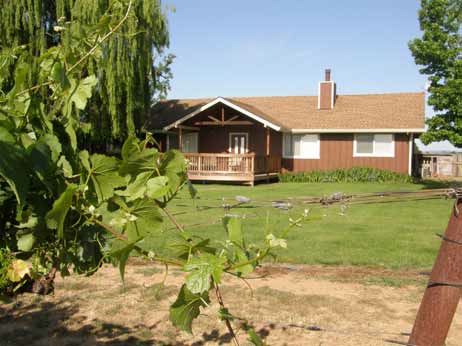
Lynmar Estate
Lynmar’s newest winemaker is Shane Finley who left New York City and the insurance
industry in the summer of 2001 to work as a harvest intern at Copain Wines in Santa Rosa, California. He then
worked harvest in Australia and France’s Northern Rhone before returning to California where he resumed
work at Copain Wines as custom crush Cellar Master. Finlay had an 18 month stint as assistant winemaker at
Paul Hobbs Winery and then joined Kosta Browne in 2006 as associate winemaker. He was the initial
winemaker for SPELL and has his own label, Shane Wines. I first met Finley when he was working at
Kosta Browne where he impressed me with his work ethic and winemaking skills. For several years, Michael
Browne encouraged him to strike out on his own and he finally did when the winemaking position opened at
Lynmar Estate in 2012.
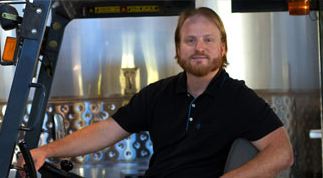
I visited Lynmar Estate and tasted through multiple barrels of the 2012 vintage with Finley (his first vintage at
Lynmar) and vineyard manager Jason Saling. Finlay reminds me of “Mini Me” in the Austin Powers movie for
he is a clone of Michael Browne in the cellar. He leads a barrel tasting like his pants are on fire, rapidly pulling
samples from several barrels in succession, exhibiting overwhelming enthusiasm. His 2012 Pinot Noirs in
barrel also remind of Michael Browne’s style of wine.
Finlay has plenty of enviable vineyard material to work with and a beautiful gravity flow winery and caves to
work in. Saling is a very talented vineyardist and works closely with Finlay to limit yields for quality. The Estate
Quail Hill Vineyard was planted in 1971 originally and has some of the oldest Pinot Noir and Chardonnay vines
in the Russian River Valley. Select heritage blocks were retained and a phased replanting undertaken of 71%
of Quail Hill Vineyard in 1996. Today the vineyard is 70% Pinot Noir (14 clones) and 30% Chardonnay (4
selections), farmed in 53 individual blocks. Multiple Pinot Noirs are offered including Quail Hill Vineyard and
special block bottlings within that vineyard, a Russian River Valley appellation blend, and several vineyarddesignated
wines from sourced fruit.
Finlay is currently getting his feet wet at Lynmar, getting to know the many clones (Dijon, Mt. Eden, Calera,
Swan, “828,” Pommard and Bebe, a Spanish clone), and adjusting coopers and barrel treatments. He prefers
about 40% new French oak with about 18 months elevage in barrel and 6 months in bottle before release. The
wines spend about 21 to 24 days on the skins with some whole cluster determined lot by lot and varying with
the vintage. Grapes are picked at 26º to 27º Brix resulting in alcohols in the 14.5% range. All winemaking is by
gravity and sulfur levels are kept low. The style is full and rich, but not cloying, jammy or pruney. He says, “I
am looking to produce juicy wines that show good tension.” (Tension is a word Michael Browne often uses).
My early impression of the 2012 vintage is quite favorable and many of the 2012 Pinot Noirs tasted had deep
color, bright aromatics, abundant sappy Pinot fruit, and long, glorious finishes. The wines made with significant
whole cluster were particularly impressive. Vineyard designate wines for 2012 will include Terra de Promissio,
Jenkins, Hawk Hill (last vintage for Lynmar), Kanzler (first time for Lynmar). Possibly a Sebastopol Hills blend
will be offered as well.
Visit the Lynmar Estate website for more information at www.lynmarwinery.com. The Lynmar Estate Hospitality
Center is the most comfortable and architecturally stunning of any in the Russian River Valley. Wine tastings
(several offered), estate tours, and wine and food pairing (picnic pairing, pinot and pizza) are offered. A wine
country getaway, the Bliss House, situation on the Lynmar 100-acre property, is offered to advocates with
priority, but is also available to the public.
2008 Lynmar Estate Quail Hill Vineyard Russian River Valley Pinot Noir
14.8% alc..
·
Dark reddish-purple
color in the glass. Aromas of very ripe berries and cherries with a hint of cola. Full-bodied and lush, veering to
the ultra ripe fruit side, offering flavors of black cherry and grilled stone fruits. Soft and plush on the palate with
a firm tannic backbone, finishing with a little heat. Good.

2009 Lynmar Estate Quail Hill Vineyard Russian River Valley Pinot Noir
14.5% alc.. 14 clones.
·
Dark reddish-purple color in the glass. Very
enticing aromas of spiced cherry, clove, plum and vanilla. Layers of
flavor arrive on the palate with aplomb, including black cherry, black
plum, fennel, cola and black tea. Perfectly ripe and juicy with modest
tannins and impressive power on the finish. Crafted beautifully and
notable for its seamless qualities. Still enchanting the following day
when tasted from a previously opened and re-corked bottle.
Keller Estate
I have always admired the wines from this estate but had never visited. I saw Ana Keller at
this year’s World of Pinot Noir, was impressed by her El Coro Pinot Noir, and gladly accepted her cordial
invitation to visit. This magnificent 650-acre ranch was purchased by Arturo Keller in 1989. He was of Swiss
heritage who grew up in Mexico and became a very successful parts supplier to the American automotive
industry. His greatest passion besides wine was vintage automobiles and on a drive through the hills of
Sonoma in one of his automobiles, he found a large ranch for sale in Petaluma.
Appropriately, the name Keller originates from the German word for “cellar.” The Keller family’s Coat of Arms,
which is printed on their labels, represents the cellar guard, who guards his prized treasures with a well-kept
key.
Located on the eastern edge of the Petaluma Gap overlooking the Petaluma River, the Keller Estate’s La Cruz
Vineyard was originally planted to Chardonnay in 1989. The first grapes were sold to Rombauer and the
potential of the site was realized. Pinot Noir was added in 1999, the following year the Keller Estate label was
started, and the first vintage was released in 2001. Shortly thereafter, a modern, gravity-flow winery, designed
by Ricardo Legorreta, a noted Mexican architect, was built and is among the most beautiful wineries in
Sonoma County. The winery is constructed out of limestone quarried from the beds of the Yangtze River.
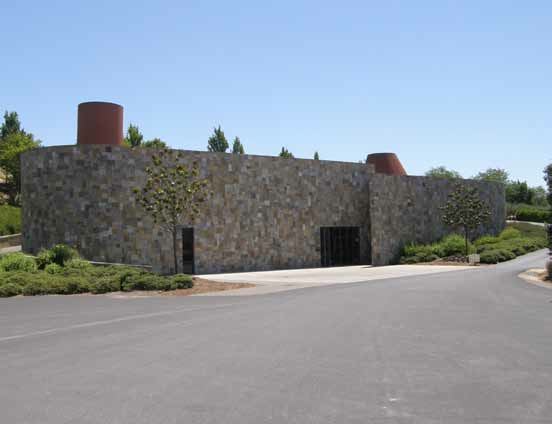
A majority of the estate including all the Chardonnay, Syrah, Pinot Gris and slightly over half of the Pinot Noir is
grown on the lower hills where the mineral laden clay soils were once San Pablo Bay sea beds making
Keller Estate’s terroir unique. The 20-acre El Coro block is planted to seven different clones of Pinot Noir and
sits high on a ridge top where the vines are more exposed to the maritime winds and fog. Here the soils are a
thin loam and clay with a volcanic subsoil. The emphasis throughout the estate is diversity of clones. At El
Coro, there are special plantings of Swan, “828,” and La Tache selections.
Arturo’s daughter, Ana Keller, a biochemist by training, has brought Keller Estate into the forefront of the
Petaluma Gap region of the Sonoma Coast appellation. She grew up in Mexico City, and fell in love with
winemaking while spending several holidays in the Loire Valley participating in harvest. She holds a degree in
Biopharmaceutical Chemistry from the University of Mexico and a Masters in Pharmaceutical Development
from King’s College in London. It was in London that Ana took her first formal wine tasting lessons. She
started in the winery’s lab in 1998 and now manages the estate and actively participates in the estate’s
viticulture and winemaking.
Three Pinot Noirs are offered: Keller Estate La Cruz Vineyard, Keller Estate El Coro, and a reserve, Keller
Estate Precioso. A Rosé, Chardonnay, Pinot Gris and Syrah are also produced. Grapes are also sold to other
wineries for vineyard-designates and 30% of Keller Estate wine production is exported.
The winery has had several notable winemakers through the years. The current winemaker is veteran Alex
Holman, a graduate of California State University at Fresno who had previous stints at Paul Hobbs, Dry Creek
Vineyard, J. Rickards Winery and Arcana Winery.
I highly recommend you visit Keller Estate not only for the superb wines but for a cerebral winery experience.
You can marvel at the winery, and view the works of local and international artists including original lithographs
from Marc Chagall, sculptures, and if your lucky, one of Arturo Keller’s collector cars, which are frequently
parked by the tasting room as a centerpiece for guests to appreciate. Over 5,000 trees have been planted on
the estate. Visit the website for tasting room hours and more information: www.kellerestate.com. The entrance
to the tasting room is pictured below.
I tasted the following wines with Ana Keller and winemaker Alex Holman. All wines are 100% de-stemmed and
whole berry fermented, and aged in modest amounts of new French oak.
2010 Keller Estate La Cruz Vineyard Sonoma Coast Pinot Noir
14.2% alc., 800 cases, $45. Just released.
Aged in 30% new French oak barrels.
·
Moderately light reddish-purple color in the glass. Very aromatic with
bright scents of cherries, strawberries and rose petals. Elegant and silky, with moderately intense flavors of red
cherries and berries with a hint of spice and a slight confected tone. The tannins are very supple and the finish
is refreshing. Good to Very good.
2011 Keller Estate La Cruz Vineyard Sonoma Coast Pinot Noir
14.1% alc., 908 cases, $45. Aged in 30%
new French oak barrels.
·
Moderately light reddish-purple color in the glass. The aromas are equally enticing to
the 2010 vintage, but offer darker cherry, blueberry and plum scents. More body and concentration with dark
cherry and more berry flavors complimented by spice and oak. Still young, the wine needs time to integrate
the oak and achieve balance. Good to Very good.
2010 Keller Estate El Coro Sonoma Coast Pinot Noir
14.2% alc., 465 cases, $52. Aged in 30%-35% new
French oak barrels.
·
Medium reddish-purple color in the glass. A serious, highly pleasurable wine offering
aromas of dark berry jam, plum reduction sauce and spice. Mid weight flavors replicate the nose. Full of
nuances and beautifully crafted with everything in place. Hard to adequately describe some of the unusual
flavors. My notes say, “Crazy about this!” Exceptional.
2011 Keller Estate El Coro Sonoma Coast Pinot Noir
14.2% alc..
·
Moderately light reddish-purple color in
the glass. Similar to the 2010 vintage, but lighter in weight, offering a fruitier nose and featuring redder fruit
flavors such as cherry and raspberry. The acidity is more evident, but the wine has the same complimentary
spice notes. A young wine, showing more oak than it will with more bottle age, but the solid tannins and lively
acidity predict a great drinking experience down the road. Very good.
Ana Keller is now the President of the Petaluma Gap Winegrowers Alliance (www.petalumagap.com). There
are 70 vineyards and 6 wineries in the Petaluma Gap region of the Sonoma Coast. It is ironic that many of the
so-called “true” Sonoma Coast wineries (those in the far western reaches of Sonoma County near the Pacific
Coast), show disdain for the Petaluma Gap area since they feel it is climatically and topographically distinct
from the true Sonoma Coast despite being part of the large Sonoma Coast AVA, yet many of them eagerly
source grapes from the Petaluma Gap region. Most of the grapes grown in the Petaluma Gap region
(predominantly Pinot Noir) leave the area and show up in Sonoma Coast blends and vineyard designates from
other wineries (ie Flowers and Freeman). For example, Terra de Promissio Pinot Noir grapes go to Kosta
Browne, Williams Selyem and Lynmar Estate. The tagline for the Petaluma Gap should be, “Follow the Fruit.”
Keller notes that the Petaluma Gap is an agricultural haven. Pinot Noir grown in the Petaluma Gap typically
gives constant yields since there is little shatter and a larger window to pick at harvest. Because of the
maritime winds entering the region through the Petaluma Gap, there is no frost to deal with and very little
mildew. She notes that the area was originally underwater, so the Pinot Noir has a signature minerality. The
photo below from a vantage point on the Keller Estate shows the distant opening in the coastal range of
mountains to the west known as the Petaluma Gap.
The location of Keller Estate can be seen on this map of the Petaluma Gap.
Freeman Vineyard & Winery
I visited Ken and Akiko Freeman at their winery to talk about the
upcoming West of West Festival. As head of the West Sonoma County Vintners, Ken is promoting the event.
To be held August 2-4 at the Barlow in Sebastopol, this festival should be on every pinotphile’s radar. Welcome
wine dinners are on Friday, August 2 including Banshee (at the new tasting room in downtown Healdsburg
featuring Chef Ari Rosen of Scopa), Failla (an al fresco dinner in the middle of Failla’s Olivet Road vineyard),
Freeman (a very special dinner at the beautiful and architecturally unique vineyard home of Ken and Akiko),
Halleck Vineyard (Ross Halleck is a great cook and will host at his home), Joseph Phelps (celebrating 40th
anniversary and second decade of Sonoma Coast winegrowing), and Littorai ( dinners both Thursday and
Friday nights due to demand).
The West of West seminars on Saturday, August 3, will feature “Diamonds in the Sky,” an exploration of the
newly formed Fort Ross-Seaview AVA, and “Syrah With a Unique Perspective,” an interactive blind tasting of
Syrah from West Sonoma Coast and other important regions around the world. The Grand Tasting of over 40
producers of wines from the West Sonoma Coast will be presented both Saturday, August 3, and Sunday,
August 4. The Grand Dinner on Saturday night will feature James Beard finalist Chef Steven Satterfield from
Miller Union in Atlanta, George. Dinner wines will be magnums of Pinot Noir and Chardonnay from members
of the West Sonoma Coast Vintners and attendees are encouraged to bring something from their cellar as well.
Freeman Pinot Noir and Chardonnay were crafted by Ed Kurtzman for several years, but Akiko has now taken
the reigns with Ed remaining as a consultant. I briefly tasted the lineup of 2011 wines at the winery. My wife
was particularly taken by the Rosé of Pinot Noir which at $20 is a steal. The Sonoma Coast and Russian River
Valley appellation Pinot Noirs were representative of the vintage. The Keefer Ranch Pinot Noir was the star in
the lineup. The Akiko’s Cuvee is a selection of the best barrels in the cellar chosen by Akiko. This is the most
serious wine and needs more time in the cellar. Tasting of Freeman’s wines is done in the winery within a cave
and by appointment. Total production is fewer than 5,000 cases, most of which is sold through a mailing list.
Visit www.freemanwinery.com.
I will be participating in a 10-year retrospective tasting of Freeman Akiko’s Cuvée Pinot Noir before the West of
West Festival and will report on that and more about Freeman Vineyard & Winery in an upcoming issue.
2011 Freeman Sonoma Coast Rosé of Pinot Noir
13.9% alc., 1,320 cases, $20.
·
Moderate ruby red color
and clear in the glass. Aromatically appealing with scents of strawberry, cherry, dried rose petal and spice.
The flavors echo the nose with accents of herbs and oak. More body and substance than most rosés, this
wine drinks more like a Pinot Noir and will pair nicely with substantial foods. A charming cherry note persists
on the finish. Good.
2011 Freeman Sonoma Coast Pinot Noir
13.9% alc., 1,320 cases, $44. Broad selection of the appellation
with contributions from six vineyards. Aged 11 months in 32% new French oak barrels.
·
Moderate reddishpurple
color in the glass. Aromas of strawberries, cherries, tobacco leaf, green herbs and a hint of oak.
Middleweight flavors of black cherry, blueberry and green herbs supported by mild tannins and finishing with
some intensity. Nicely balanced and easy to drink. Good.




